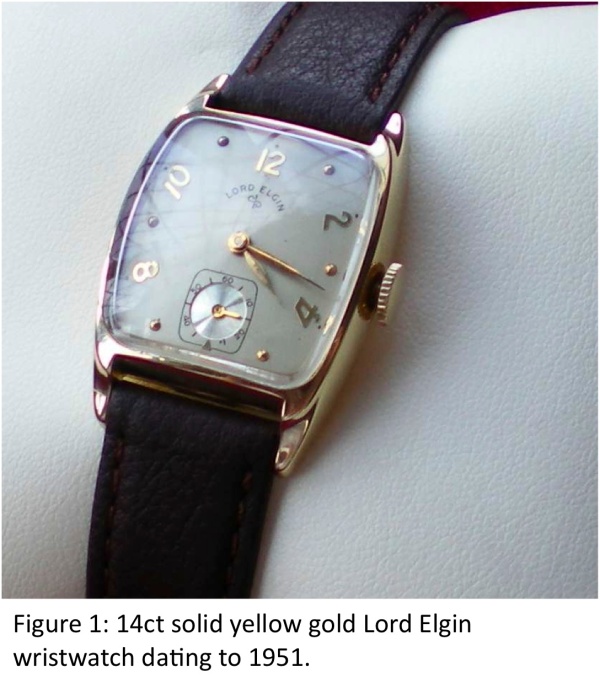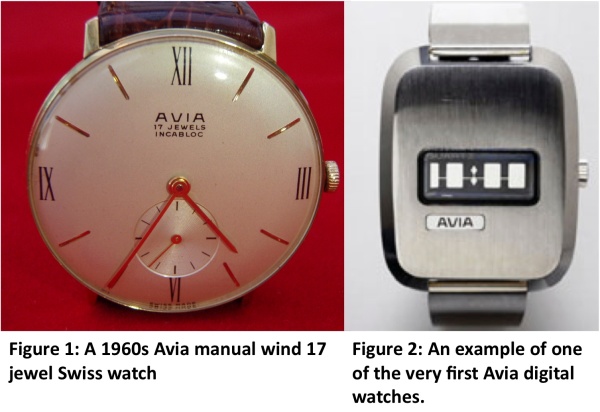by Morgan Denyer (Penrose Antiques Ltd)
Here is a bit of a horological heresey, the English Waltham! The Waltham watch company was steeped in American History, the company was founded by David Davies, Edward Howard and Aaron Lufkin Dennison who in 1850 set up a company in Roxbury Massachusetts to manufacture watch parts. The company was reputedly set up under a cloud of secrecy because David Davies, Edward Howard and Aaron Lufkin Dennison were going to do something quite inventive, set up a watch manufacturing company in which all the components were made in their watch factory subject to strict quality control. This was quite unheard of and pretty much a world first. The watches they produced represented a revolution in watch making, they could mass produce watches with interchangeable parts.
The first watches were made in 1852, and the company was named the Boston Watch Company in 1853. However the cost of production and retooling took its toll and the company was declared bankrupt resulting in the sale of the factory and larger machines to Royal E Robinns in 1857. He renamed the company Appleton Tracy & Company (ATCo) and retained Aaron Dennison as the factory superintendent. That year the company completed the development of the Model 1857 movement. By 1861 and the start of the American Civil War, ATCo had started to manufacture the William Ellery Model 57 watch. These watches were cheaply mass produced and became popular with Union soldiers who could buy them from roving merchants for a mere $13 or so. It seems that by the end of the civil war in 1865, the William Every Model 57 (Figure 1) accounted for 44.6% of the Waltham sales with the American Civil War Ellery watch serial number reaching around 161,000. (see “Origins of the Waltham Model 57” and “A closer look at a Civil War watch “ ).
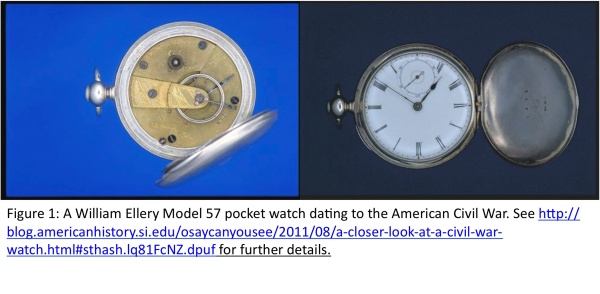 Heated debate about the Ellery 57 Model watch represented a turning point in the career of Aaron Dennison. He fell out with Robinns in 1861 and Robinns eventually dismissed him for being a “vocal Dissenter” in 1862. One can imagine that this was a bit of a blow, but the success of the Ellery 57 and the perceived vindication of Dennison’s views seemed to drive him on to his next commercial venture. In 1864 Dennison took the opportunity to set up the Tremont Watch Company with A. O. Bigelow. The idea here was to assemble watches in the US from fine parts sourced in Switzerland and larger parts sourced in America. Seemed like a good plan, but whilst Dennison was away in Switzerland organising the transport of components, his partners decided to move the company to Melrose and manufacture complete watches there. Needless to say Dennison was not pleased, he left the new company predicting utter disaster and moved to Birmingham England in 1871 where he established a watch case making business in 1872. His timing was perfect because of the opening in 1874 of the London office of the American Watch Company by N.P. Stratton, (assistant superintendant to Dennison in 1857, see “Watches Factories of America; Past and Present” by Henry G Abbott). Here was a ready market for Dennison’s cases and the person he had to convince of the value of his watch cases was none other than his old assistant superintendent at the American Watch Company. Unsurprisingly the majority of the output of Dennison’s new watch case manufacturing business ended up being used by the London branch of the American Watch Company. What was particularly interesting about this though was that these early Dennison cases did not carry the Dennison makers mark, but AWCo, presumably because Robbins wouldn’t tolerate a Dennison makers mark on his watches.
Heated debate about the Ellery 57 Model watch represented a turning point in the career of Aaron Dennison. He fell out with Robinns in 1861 and Robinns eventually dismissed him for being a “vocal Dissenter” in 1862. One can imagine that this was a bit of a blow, but the success of the Ellery 57 and the perceived vindication of Dennison’s views seemed to drive him on to his next commercial venture. In 1864 Dennison took the opportunity to set up the Tremont Watch Company with A. O. Bigelow. The idea here was to assemble watches in the US from fine parts sourced in Switzerland and larger parts sourced in America. Seemed like a good plan, but whilst Dennison was away in Switzerland organising the transport of components, his partners decided to move the company to Melrose and manufacture complete watches there. Needless to say Dennison was not pleased, he left the new company predicting utter disaster and moved to Birmingham England in 1871 where he established a watch case making business in 1872. His timing was perfect because of the opening in 1874 of the London office of the American Watch Company by N.P. Stratton, (assistant superintendant to Dennison in 1857, see “Watches Factories of America; Past and Present” by Henry G Abbott). Here was a ready market for Dennison’s cases and the person he had to convince of the value of his watch cases was none other than his old assistant superintendent at the American Watch Company. Unsurprisingly the majority of the output of Dennison’s new watch case manufacturing business ended up being used by the London branch of the American Watch Company. What was particularly interesting about this though was that these early Dennison cases did not carry the Dennison makers mark, but AWCo, presumably because Robbins wouldn’t tolerate a Dennison makers mark on his watches.
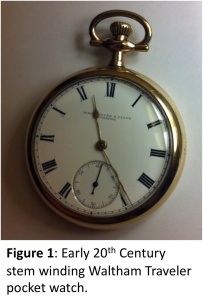 The association between the Dennison Watch Case Company and AWCo and the Later Waltham Watch Company, was maintained long after Aaron Dennison’s death in 1895. The success of this collaborative venture was exemplified by the Waltham Traveler (Figure 2). The Waltham Traveler consisted of a 7 jewel movement and was favoured for the export market in the early 20th century. Tens of thousands were sent to the UK where they were mostly cased in Dennison gold or gold plated cases. These watches were robust and many have survived in good working order. They represent a very good investment for those wishing to buy a good antique watch. The real benefit of these watches is that because they were mass produced, the parts are readily sourced and are fully interchangeable.
The association between the Dennison Watch Case Company and AWCo and the Later Waltham Watch Company, was maintained long after Aaron Dennison’s death in 1895. The success of this collaborative venture was exemplified by the Waltham Traveler (Figure 2). The Waltham Traveler consisted of a 7 jewel movement and was favoured for the export market in the early 20th century. Tens of thousands were sent to the UK where they were mostly cased in Dennison gold or gold plated cases. These watches were robust and many have survived in good working order. They represent a very good investment for those wishing to buy a good antique watch. The real benefit of these watches is that because they were mass produced, the parts are readily sourced and are fully interchangeable.
By the First World War Waltham had become a major supplier of watch movements in the UK, but the market was changing. Pocket watches were of little use in the trenches of the European battle fields and troops had started to modify their watches by the addition of wire lugs. Dennison, having his business located in the UK was in a prime position to take advantage of this. By 1914/15 Dennison had started to make transitional or trench watch cases consisting of what looked like pocket watch cases fitted with wire lugs (Figure 3). These were designed to fit Waltham movements and were a favorite with British officers heading of to war. The design actually gained such popularity with the conservative British that the Dennison transitional watch cases were made right through the 1920s and into the mid to late1930s. The latest example we at Penrose Antiques Ltd have encountered dated from 1938.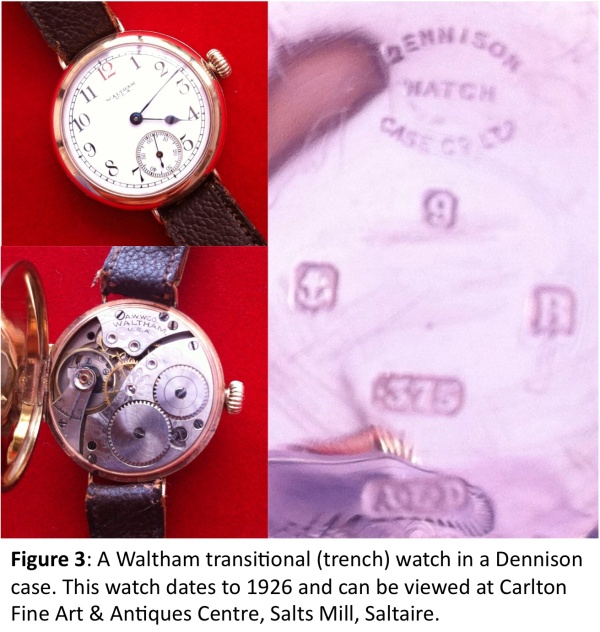
Post WW1 there were also drivers to further refine wristwatch design. This was very much a period of the tank watch, a design first created by Louis Cartier in 1917. Virtually all watchmakers leaped on the tank watch bandwagon, and Waltham, was no different. By the 1920s Waltham was producing a range of movements designed to fit slim rectangular dress watchcases. Many of these movements made it to the UK to be encased in lovely simple but elegant slim lozenge shaped curved art Art Deco Dennison cases.
In the history of watch making, many watch manufacturers had watch movements made to fit their watch cases, for example the American Ball Watch Company used Swiss made Avia watch movement. Thus one could argue that the Walthams assembled in the UK form English made Dennison cases represent a special bread of English Walthams. After all many of the Dennison cases, although designed to fit Waltham movements were also designed for the English market. For example the early trench watch cases made by Dennison specifically met the needs of the British heading off to the trenches. The design was only later adopted by Waltham in the US to meet the needs of American troops post April 6th 1917 when the USA entered the war. So perhaps Britain, via the efforts and perseverance of Aaron Dennison can bathe in a small portion of the glory of the historically great American Waltham Watch Company.
The association with Dennison and the English market may also have played a part in the eventual downfall of the Waltham Watch Company. The British were by nature very conservative, but the UK was a major market for Waltham. Perhaps to meet the needs of this market, Waltham maintained a more conservative output, and it may have been that the English conservative influence led Waltham watches to be perceived as a bit boring in the home US market. This perception of conservatism was believed to have played a part in a decline of sales and the eventual bankruptcy of the Waltham Watch Company in 1949 and closure of the American Waltham Watch factory in 1957.
